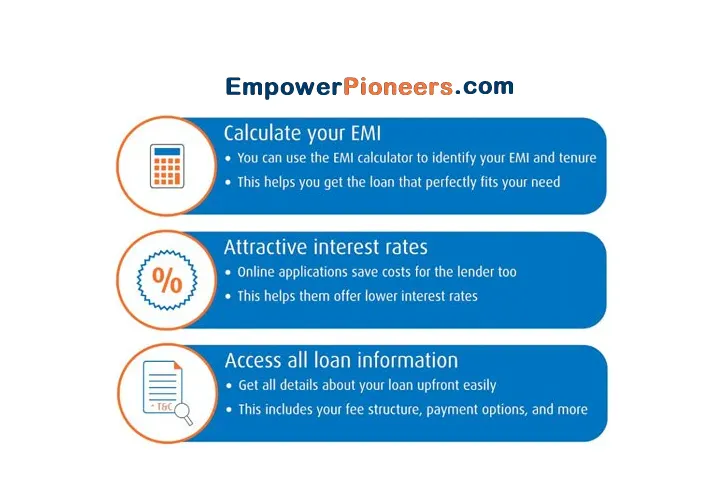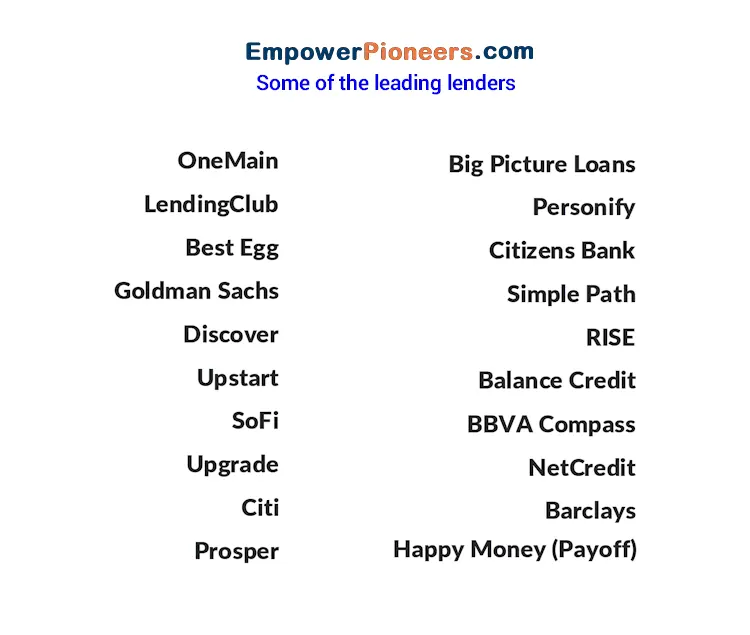October 21st, 2025
Understanding different types of loans is crucial for managing your finances effectively and making informed decisions about borrowing money. Here’s a comprehensive guide to the various types of loans available:
1. Personal Loans
- Unsecured Personal Loans: These do not require collateral and are typically based on your creditworthiness. They can be used for various purposes, like debt consolidation or emergencies. Interest rates are usually higher due to the lack of collateral.
- Secured Personal Loans: These require collateral, such as a car or savings account, which reduces the lender’s risk. As a result, interest rates may be lower compared to unsecured loans.
2. Credit Cards
- Revolving Credit: Credit cards allow you to borrow up to a certain limit and pay it back over time. They offer flexibility but come with high-interest rates if balances are not paid in full each month.
3. Auto Loans
- New Car Loans: Specifically for purchasing a new vehicle, these loans often come with lower interest rates due to the new car’s value and collateral.
- Used Car Loans: For purchasing used vehicles, the terms might be less favorable, with slightly higher interest rates compared to new car loans.
4. Mortgage Loans
- Fixed-Rate Mortgages: These have a constant interest rate and monthly payments over the life of the loan, typically 15, 20, or 30 years. They provide predictability and stability.
- Adjustable-Rate Mortgages (ARMs): Interest rates on these loans change periodically based on market conditions. They often start with lower rates but can increase over time, affecting monthly payments.
- Interest-Only Mortgages: For a certain period, you only pay interest, which means lower monthly payments initially. After this period, payments increase to include both principal and interest.
- FHA Loans: Backed by the Federal Housing Administration, these are designed for low-to-moderate-income borrowers and typically require a lower down payment.
- VA Loans: Available to veterans and service members, these loans are backed by the Department of Veterans Affairs and often require no down payment and have favorable terms.
5. Student Loans
- Federal Student Loans: Offered by the government with fixed interest rates and various repayment options. Includes Direct Subsidized Loans (where the government pays the interest while you’re in school) and Direct Unsubsidized Loans.
- Private Student Loans: Provided by private lenders with varying interest rates and terms. These often require a credit check and can have less favorable repayment terms compared to federal loans.
6. Home Equity Loans and Lines of Credit
- Home Equity Loan: A lump sum loan based on the equity of your home, usually with a fixed interest rate. It’s often used for large expenses like home improvements or debt consolidation.
- Home Equity Line of Credit (HELOC): A revolving credit line based on your home equity, with a variable interest rate. It allows you to borrow and repay funds as needed.
7. Business Loans
- SBA Loans: Small Business Administration-backed loans that offer favorable terms to small businesses. They include various types like 7(a) loans and CDC/504 loans.
- Term Loans: Standard loans with fixed terms and payments, often used for purchasing equipment or expanding business operations.
- Business Lines of Credit: Similar to a credit card, this provides flexible access to funds for short-term needs, with interest charged only on the amount used.
8. Payday Loans
- Short-Term Loans: Typically for small amounts and due on your next payday. They come with very high-interest rates and fees, often leading to a cycle of debt if not managed carefully.
9. Title Loans
- Secured by Vehicle Title: These loans use your vehicle’s title as collateral. They usually come with high-interest rates and short repayment terms, posing a risk of losing your vehicle if you default.
Key Considerations When Choosing a Loan
- Interest Rates: Understand whether the rate is fixed or variable and how it impacts your repayment.
- Fees: Look for application fees, origination fees, prepayment penalties, and other charges.
- Repayment Terms: Consider the length of the loan and how it affects your monthly payments and total interest paid.
- Collateral: Determine whether the loan requires collateral and the risks involved.
Understanding these loan types and their specific features can help you choose the right option for your financial situation and goals. If you’re unsure, consulting with a financial advisor can provide personalized guidance tailored to your needs.

Loan Industry Changes (Personal Loans)
In the aftermath of the Global Financial Crisis of 2008 Mortgage Crises, personal and commercial loans industry and loan processing went through many changes.
While new financial technology (FinTech) lenders entered the market and some even morphed into other types of institutions, traditional lenders continued to play an important role in providing loans to consumers.
As the outstanding balances of these loans have recently started to accelerate, new changes are once again taking place in restructuring loans and loan processing.
By the end of 2022, personal loans—also known as installment loans—reached $356 billion, accounting for approximately 10 percent of nonrevolving credit. These loans are used for various purposes, including debt consolidation, medical expenses, vacations, or purchasing large items.
The sector is primarily dominated by depository institutions, such as banks, thrifts, and credit unions, as well as finance companies, including personal loan and sales finance companies.
Also, some payday lenders have recently begun offering installment loans, a new trend highlighted by our data. Each type of lender has unique characteristics that influence their underwriting practices, pricing, regional focus, and overall loan holdings.
Although personal loans can have a variety of characteristics, they can be broadly categorized
into secured—backed by collateral such as jewelry, savings accounts, or fine art — and unsecured
loans.
That said, they can also take the form of note loans or promissory notes, which are less
formal agreements usually for small dollar amounts among parties with an existing lending rela-
tionship.
Alternatively, a consumer could also borrow from a finance company indirectly through
an installment sales contract, an agreement whereby the loan is issued by a retailer and then sub-
sequently purchased by a sales finance company. Personal loans can have either fixed or variable
interest rates.
All credit is associated with a FICO, or credit score. This is a score produced by one or all of the three major credit bureaus which are TransUnion, Equifax, and Experian.
The FICO scoring system goes from 300 to 800.
Great credit is from 740 to 799.
Good credit is from 670 to 739.
Fair credit is from 580 to 669.
Poor or bad credit is from 300 to 579.
Many people with poor credit may think they are one of the few in that range. The truth is 25% of Americans have either poor or fair credit with scores that range from 300 to 649.
Loan Industry Changes (Commercial Loans)
As of 2025, several key changes are shaping the commercial lending industry:
- Digital Transformation: The adoption of digital technologies has accelerated, with lenders increasingly using online platforms and automated systems for loan origination, underwriting, and servicing. This shift is streamlining processes, reducing costs, and improving customer experience by offering faster and more efficient loan applications and approvals.
- Increased Use of Data Analytics: Lenders are leveraging advanced data analytics and artificial intelligence (AI) to enhance credit risk assessment, personalize loan offerings, and identify potential fraud. This data-driven approach allows for more accurate risk management and targeted marketing strategies.
- Rise of Alternative Lenders: FinTech companies and alternative lenders are gaining market share, offering innovative financing solutions such as peer-to-peer lending, crowdfunding, and revenue-based financing. These alternative sources are appealing to businesses seeking more flexible or expedited financing options.
- Focus on ESG and Sustainability: There is a growing emphasis on Environmental, Social, and Governance (ESG) criteria in lending decisions. Lenders are increasingly incorporating ESG factors into their underwriting processes and offering green loans or sustainability-linked loans to support environmentally and socially responsible projects.
- Regulatory Changes: The commercial lending landscape is evolving with new regulatory requirements and compliance standards. These changes impact how lenders operate, including stricter regulations on data privacy, anti-money laundering, and fair lending practices.
- Interest Rate Fluctuations: Interest rates have been volatile due to economic conditions and central bank policies. This volatility affects loan pricing and borrowing costs, influencing both lenders and borrowers in terms of financing strategies and financial planning.
- Shift Toward Relationship-Based Lending: Despite the rise of digital and automated solutions, there is a renewed focus on relationship-based lending. Lenders are emphasizing personalized service and long-term relationships with borrowers, particularly in niche markets and for complex financing needs.
These trends are transforming the commercial lending industry, making it more dynamic and responsive to changing market conditions and borrower needs.

Tips Regarding Personal and Commercial Loans for Consumers
When choosing among different loan options, borrowers should consider several key factors to ensure they select the most suitable loan for their needs and financial situation:
- Evaluate Interest Rates and Terms: Compare the interest rates and loan terms offered by different lenders. Fixed-rate loans provide stability with consistent payments, while variable-rate loans might start lower but can increase over time. Choose the type that aligns with your budget and financial plans.
- Assess Your Financial Situation: Determine your ability to make monthly payments and whether you can provide collateral. For unsecured loans, ensure you can handle the higher interest rates and payment obligations. For secured loans, weigh the risk of losing the collateral if you default.
- Understand Fees and Costs: Look beyond the interest rate to understand all associated fees, such as application fees, origination fees, and prepayment penalties. These can significantly affect the total cost of the loan, so consider them in your decision-making process.
- Check Repayment Flexibility: Review the loan’s repayment terms, including the length of the loan and whether there are options for early repayment or refinancing. Flexibility in repayment terms can be beneficial if your financial situation changes.
- Consider the Purpose of the Loan: Match the loan type with its intended use. For instance, use auto loans for vehicle purchases, mortgages for buying a home, and personal loans for general expenses or debt consolidation. Specialized loans often come with better terms for specific purposes.
- Review Your Credit Score: Your credit score affects the interest rates and terms you’re offered. Check your credit report and ensure it’s accurate before applying. Higher credit scores typically qualify for better rates and terms.
- Read the Fine Print: Thoroughly review the loan agreement, including all terms and conditions, before signing. Pay attention to details about interest rate adjustments, repayment schedules, and any potential penalties.
- Seek Professional Advice: If you’re unsure about the best option, consider consulting with a financial advisor or loan specialist. They can provide personalized advice based on your financial situation and help you navigate complex loan terms.
By carefully considering these factors, borrowers can make informed decisions and choose a loan that best fits their financial needs and goals.

Supply of Loans
Mintel data estimates that in 2025, approximately 1.5 billion personal loan acquisition offers were sent to consumers. Unsecured loans dominated this supply, accounting for the majority of offers, while secured loans made up only 7 percent of the total.
Finance companies and FinTech lenders, often in collaboration with specialized banks, lead the market with 34 percent and 33 percent of mail offer solicitations, respectively.
The remaining offers were distributed by banks not involved in partnerships (16 percent), independent FinTech lenders (7 percent), banks typically engaged in partnerships but making standalone offers (6 percent), other financial institutions (3 percent), payday lenders offering installment loans (2 percent), and credit unions (less than 1 percent).
The personal loan supply landscape in 2025 largely mirrored that of the previous decade. In the FinTech-bank partnership sector over the past ten years, notable market leaders include WebBank and Cross River Bank, along with other participants such as First Bank of Delaware, First Electronic Bank, Farmers Merchant Bank, Mid America Bank & Trust Company, County Bank of Rehoboth Beach, Republic Bank, The Brand Banking Company, FinWise Bank, Goldman Sachs Bank USA, First Bank & Trust, and Capital Community Bank.
Within this sector, WebBank and Cross River Bank dominate, accounting for 55 percent and 36 percent of offerings, respectively.
FinTech companies, in contrast, have a less concentrated presence in these partnerships. Prior to becoming a bank, LendingClub had the largest share of offerings at 37 percent, followed by Best Egg with 25 percent, and Prosper with 18 percent. Upstart and Upgrade held smaller shares, with 9 percent and 3 percent, respectively.


